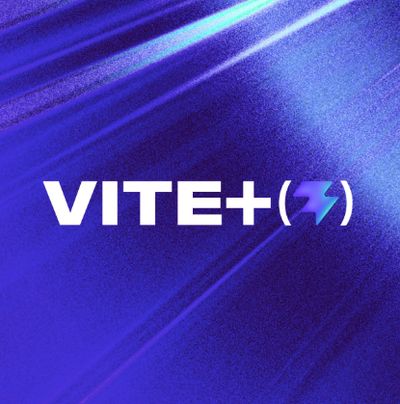@percy/core
The core component of Percy's CLI and SDKs that handles creating builds, discovering snapshot
assets, uploading snapshots, and finalizing builds. Uses @percy/client for API communication, a
Chromium browser for asset discovery, and starts a local API server for posting snapshots from
other processes.
Usage
A Percy class instance can manage a Percy build, take page snapshots, and perform snapshot asset
discovery. It also hosts a local API server for Percy SDKs to communicate with.
import Percy from '@percy/core'
const percy = new Percy(percyOptions)
const percy = await Percy.start(percyOptions)
Options
token — Your project's PERCY_TOKEN (default process.env.PERCY_TOKEN)loglevel — Logger level, one of "info", "warn", "error", "debug" (default "info")server — Controls whether an API server is created (default true)port — API server port (default 5338)clientInfo — Client info sent to Percy via a user-agent stringenvironmentInfo — Environment info also sent with the user-agent stringdeferUploads — Defer creating a build and uploading snapshots until laterskipUploads — Skip creating a build and uploading snapshots altogether
The following options can also be defined within a Percy config file
snapshot — Snapshot options applied to each snapshot
widths — Widths to take screenshots at (default [375, 1280])minHeight — Minimum screenshot height (default 1024)percyCSS — Percy specific CSS to inject into the snapshotenableJavaScript — Enable JavaScript for screenshots (default false)
discovery — Asset discovery options
allowedHostnames — Array of allowed hostnames to capture assets fromdisallowedHostnames — Array of hostnames where requests will be abortedrequestHeaders — Request headers used when discovering snapshot assetsauthorization — Basic auth username and password for protected snapshot assetsdisableCache — Disable asset caching (default false)userAgent — Custom user-agent string used when requesting assetscookies — Browser cookies to use when requesting assetsnetworkIdleTimeout — Milliseconds to wait for the network to idle (default 100)concurrency — Asset discovery concurrency (default 5)launchOptions — Asset discovery browser launch options
executable — Browser executable path (default process.env.PERCY_BROWSER_EXECUTABLE)timeout — Discovery launch timeout, in milliseconds (default 30000)args — Additional browser process argumentsheadless — Runs the browser headlessly (default true)
Additional Percy config file options are also allowed and will override any options defined by a
local config file. These config file options are also made available to SDKs via the local API
health check endpoint.
#start()
Starting a Percy instance will start a local API server, start the asset discovery browser, and
create a new Percy build. If an asset discovery browser is not found, one will be downloaded.
await percy.start()
API Server
Starting a Percy instance will start a local API server unless server is false. The server can
be found at http://localhost:5338/ or at the provided port number.
- GET
/percy/healthcheck – Responds with information about the running instance
- GET
/percy/dom.js – Responds with the @percy/dom library
- GET
/percy/idle - Responds when the running instance is idle
- POST
/percy/snapshot – Calls #snapshot() with provided snapshot options
- POST
/percy/stop - Remotely stops the running Percy instance
#stop([force])
Stopping a Percy instance will wait for any pending snapshots, close the asset discovery browser,
close the local API server, and finalize the current Percy build. When uploads are deferred,
stopping the instance will also trigger processing of the upload queue. When force is true,
queues are cleared and closed to prevent queued snapshots from running.
await percy.stop()
await percy.stop(true)
#idle()
This method will resolve shortly after pending snapshots and uploads have completed and no more have
started. Queued tasks are not considered pending unless they are actively running, so deferred
uploads will not be awaited on with this method.
percy.snapshot(...);
percy.snapshot(...);
percy.snapshot(...);
await percy.idle()
#snapshot(options)
Takes one or more snapshots of a page while discovering resources to upload with the snapshot. Once
asset discovery has completed, the queued snapshot will resolve and an upload task will be queued
separately. Accepts several different syntaxes for taking snapshots in various ways.
All available syntaxes will push snapshots into the snapshot queue without the need to await on the
method directly. This method resolves after the snapshot upload is queued, but does not await on the
upload to complete.
percy.snapshot({
name: 'Snapshot 1',
url: 'http://localhost:3000',
domSnapshot: domSnapshot,
clientInfo: 'my-sdk',
environmentInfo: 'my-lib'
})
percy.snapshot({
name: 'Snapshot 2',
url: 'http://localhost:3000',
waitForTimeout: 1000,
waitForSelector: '.done-loading',
execute: async () => {},
additionalSnapshots: [{
name: 'Snapshot 2.1',
execute: () => {}
}]
})
percy.snapshot({
baseUrl: 'http://localhost:3000',
snapshots: ['/', '/about', '/contact'],
options: {
widths: [600, 1200]
}
})
percy.snapshot({
sitemap: 'https://example.com/sitemap.xml',
exclude: ['/blog/*']
})
percy.snapshot({
serve: './public',
cleanUrls: true,
})
Options
When capturing a single snapshot, the snapshot URL may be provided as the only argument rather than
a snapshot options object. When providing an options object, a few alternate syntaxes are available
depending on the provided properties (see alternate syntaxes below).
Common options accepted for each snapshot:
url — Snapshot URL (required)name — Snapshot namedomSnapshot — Snapshot DOM stringdiscovery - Limited snapshot specific discovery options
allowedHostnames, disallowedHostnames, requestHeaders, authorization, disableCache, userAgent
Common snapshot options are also accepted and will override instance snapshot options. See instance
options for common snapshot and discovery options.
Capture options can only be provided when domSnapshot is missing:
waitForTimeout — Milliseconds to wait before taking a snapshotwaitForSelector — CSS selector to wait for before taking a snapshotexecute — Function or function body to execute within the page before taking a snapshotadditionalSnapshots — Array of additional sequential snapshots to take of the page
name — Snapshot name (required if no prefix or suffix)prefix — Snapshot name prefix (required if no name or suffix)suffix — Snapshot name suffix (required if no name or prefix)waitForTimeout, waitForSelector, execute — See above
Alternate syntaxes
All snapshot syntaxes can be provided as items within an array. For example, a single method call
can upload multiple DOM snapshots, capture multiple external snapshots, crawl a sitemap for
snapshots, and host a local static server for snapshots.
Shared options accepted by all syntaxes:
clientInfo — Client info to include with the buildenvironmentInfo — Environment info to include with the build
The following alternate syntaxes may not be combined with snapshot options, but rather offer
alternate methods for taking multiple snapshots.
List options can only be provided when a top-level snapshots is present:
snapshots — An array of snapshot URLs or snapshot options (required)baseUrl — The full base URL (including protocol) used when snapshot URLs only include a pathnameinclude/exclude — Include and exclude matching snapshot namesoptions — Additional options to apply to snapshots
Sitemap options can only be provided when a top-level sitemap is present:
sitemap — The URL where an XML sitemap can be located (required)include/exclude — Include and exclude matching snapshot namesoptions — Additional options to apply to snapshots
Server options can only be provided when a top-level serve is present:
serve — The static directory to serve relative to the current working directory (required)baseUrl — The base URL to serve the directory at, starting with a forward slash (/)cleanUrls — Set to true to strip .html and index.html from served URLsrewrites — A source-destination map for rewriting source URLs into destination pathnamessnapshots — An array of specific snapshots to take while serving the static directoryinclude/exclude — Include and exclude matching snapshot namesoptions — Additional options to apply to snapshots
Advanced
Download discovery browser on install
By default, the browser is only downloaded when asset discovery is started for the first time. This
is because many features of the CLI do not require a browser at all, and automatically downloading a
browser creates a much heavier footprint than needed for those features. However, if your CI caches
dependencies after the install step, the browser will not be cached and will be downloaded every
time Percy runs without it.
If the environment variable PERCY_POSTINSTALL_BROWSER is present and truthy, then the browser will
be downloaded after the package is installed to allow it to be cached. You can also require
@percy/core/post-install within another node module to trigger the browser download manually.
Skipping discovery browser download
If your CI comes with a Chromium binary pre-installed and you wish to skip Percy's own browser
installation, you can set the respective discovery.launchOptions.executable config option. When
the executable at the provided path exists, the default download will be skipped and the provided
binary will be used instead. This option can also be set using the PERCY_BROWSER_EXECUTABLE
environment variable.
Warning! Percy is only tested against the browser it downloads automatically. When providing a
custom browser executable, you may experience unexpected issues.
How to update Chromium revision?
Excerpt
check the release information on Github where the expected Chromium version and revision is specified.
For example:
v1.17.0
Big Changes
Chromium 76.0.3803.0 (r662092)
-
Go to Chromium browser snapshots
-
Choose the directory of your platform (e.g., Linux_x64)
-
Copy the revision number into the "Filter:" field without the "r" (e.g., 662092)
-
Fetch revision number for rest of the platform (Win, Win_x64, Mac, Mac_Arm), it should be nearby (Tip: verify the date of upload).



